Mongla, July 26 (V7N) – Large parts of the Sundarbans, the world’s largest mangrove forest, have been submerged under unusually high tidal waters, driven by a combination of a seasonal new moon tide and a developing low-pressure system in the Bay of Bengal. Water levels rose between 2.5 to 3.5 feet above normal across different forest zones, according to local forest officials.
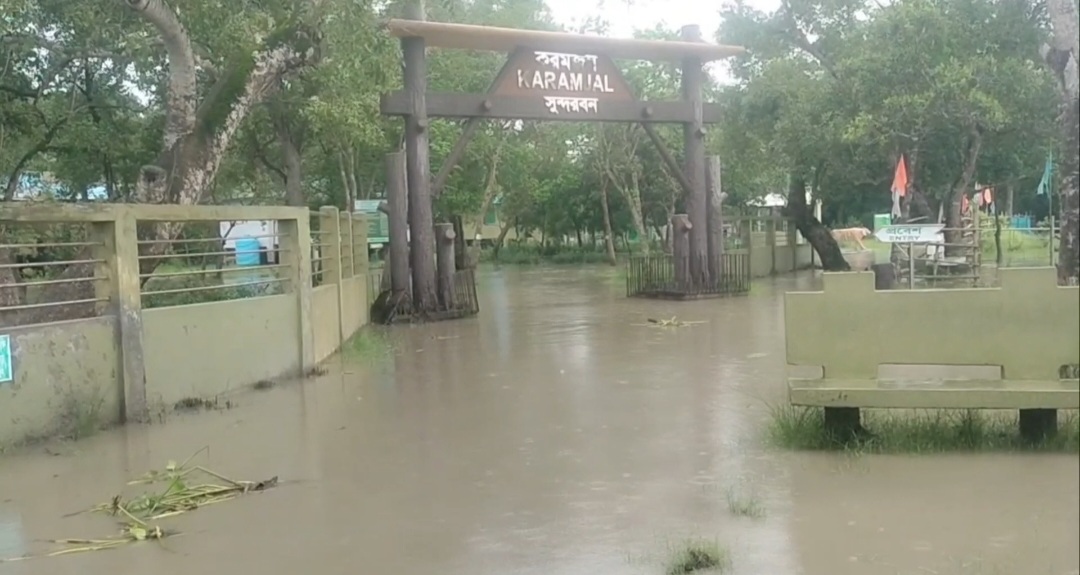
Mohammad Azad Kabir, the acting officer-in-charge at the Karamjal Wildlife Breeding and Tourism Center under the Chandpai Range of the Eastern Sundarbans Division, confirmed the extent of the flooding during the daytime high tide on Saturday.
Key areas such as Karamjal, Jongra, Moraposhur, Harbaria, Ghagramari, and Laudob experienced flooding up to 2.5 feet, while water levels in Hiron Point, Kotka, and Kochikhali rose to around 3.5 feet, temporarily inundating the forest floor.
Despite the extensive submersion, the forest department has assured that the risk to both the ecosystem and wildlife remains minimal. Azad Kabir explained that the Sundarbans contain approximately 40 elevated mounds known as “Tiger Hills,” which serve as natural shelters for animals like tigers, deer, and wild boars during high tides. He also noted that the tidal waters typically recede within two to two and a half hours, further reducing the likelihood of harm to wildlife.
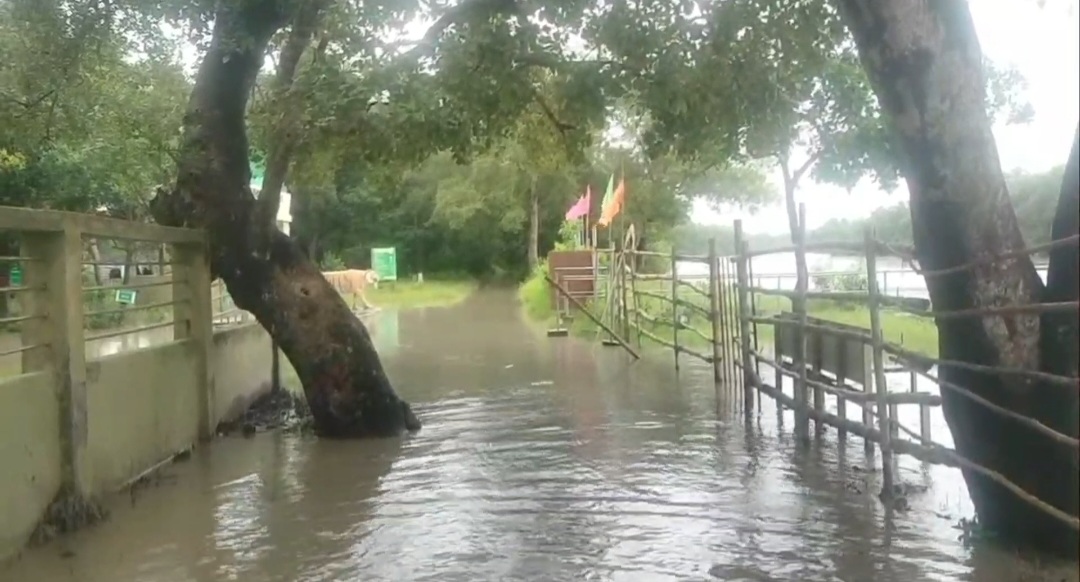
Freshwater ponds—numbering around 88 within the forest—are also expected to remain unaffected. These reservoirs, essential for drinking water for both animals and local forest workers, are protected by raised embankments that prevent intrusion of saline water during such tidal events.
The forest official added that the current tidal surge coincided with the astronomical spring tide of the new moon, a time when water levels naturally rise. However, the impact was intensified by the influence of the low-pressure system. "In summer, daytime tides are usually higher than nighttime ones, while the opposite is true in winter," Kabir said, attributing the extreme conditions to this seasonal phenomenon.
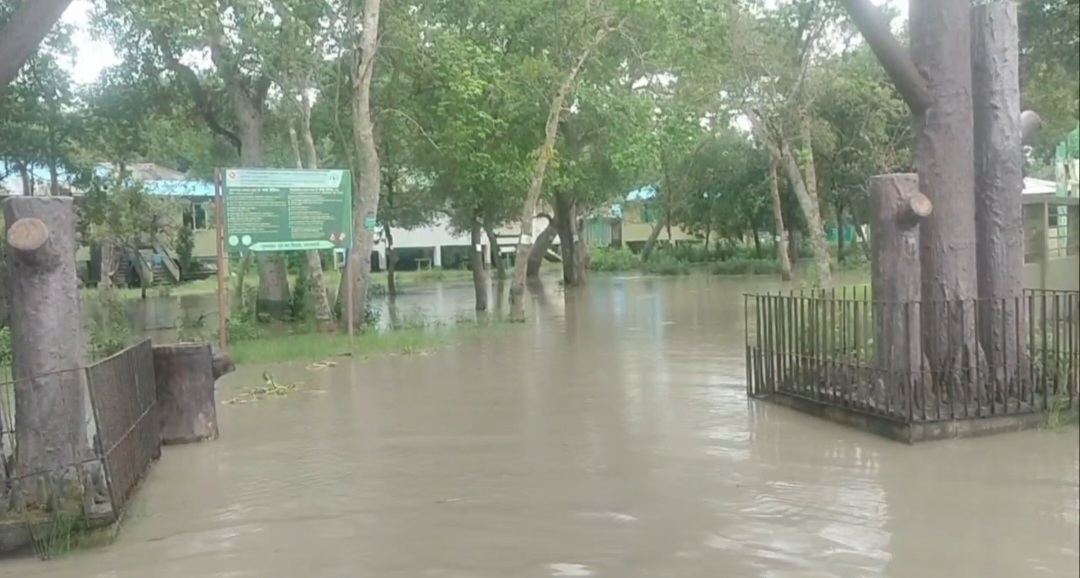
Elsewhere, the effects of the same tidal surge were felt in low-lying areas along the banks of the Poshur River in Mongla. Agricultural lands, homes, and roads were briefly flooded. However, as the water receded with the outgoing tide, the risk of long-term damage or waterlogging in these areas appears limited.
This incident underscores the fragile balance between natural tidal cycles and weather systems in coastal Bangladesh, where the impact of climate variability continues to pose challenges to both human settlements and critical ecosystems like the Sundarbans.
END/AHS/SMA/



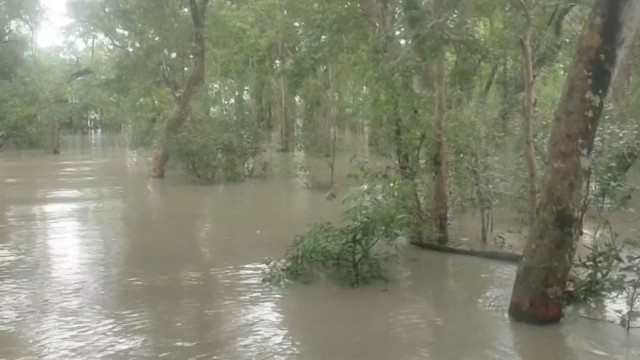


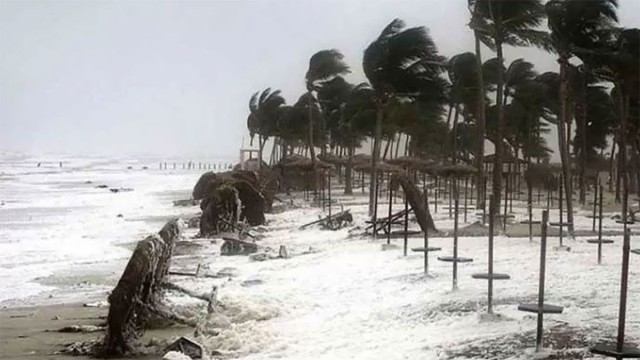






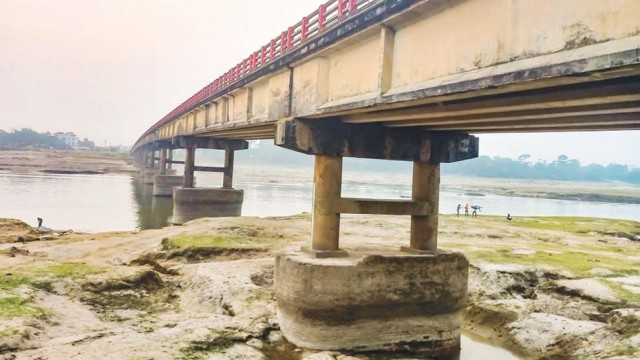

















Comment: